

Original Article - Year 2011 - Volume 26 -
Assessment of long-term patient satisfaction after rhinoplasty performed at the Plastic Surgery Department of Santa Casa de Misericórdia de Porto Alegre
Avaliação da satisfação a longo prazo dos pacientes submetidos a rinoplastia no Serviço de Cirurgia Plástica da Santa Casa de Misericórdia de Porto Alegre
ABSTRACT
BACKGROUND: There are currently few studies assessing patient satisfaction after rhinoplasty or other aesthetic procedures. This is a retrospective study of patient satisfaction after rhinoplasty performed at the Plastic Surgery Department of Santa Casa de Misericórdia de Porto Alegre.
METHODS: All (n = 119) patients who underwent rhinoplasty at the Plastic Surgery Department of Santa Casa de Misericórdia de Porto Alegre between 2007 and 2009 were requested to fill out a validated questionnaire to assess the degree of postoperative satisfaction.
RESULTS: Sixty (50.42%) patients were included in the study. The global satisfaction index with respect to the aesthetic and functional results showed that 85.48% of the patients were satisfied; 88.3% of patients were pleased with the aesthetic results, and 83.3% reported satisfactory functional results and could breathe easily. Regarding the impression of the patients' family and friends, 93.3% reported that they were completely pleased; 93.3% reported that the postoperative nasal form rarely or never limited social or professional activities; 75% of the patients were completely confident that nasal appearance was the best possible, while 76.7% reported that their nasal appearance could not be changed by another surgery and 83.4% did not believe that nasal function could be changed with another surgery.
CONCLUSIONS: Rhinoplasty performed at the Plastic Surgery Department of Santa Casa de Misericórdia de Porto Alegre resulted in a high level of patient satisfaction.
Keywords: Rhinoplasty. Patient satisfaction. Outcome assessment. Questionnaires.
RESUMO
INTRODUÇÃO: A rinoplastia, assim como diversos procedimentos estéticos, apresenta parcos estudos objetivos quanto à satisfação dos pacientes. O objetivo do presente estudo é avaliar o grau de satisfação a longo prazo dos pacientes submetidos a rinoplastia na Santa Casa de Misericórdia de Porto Alegre, em um estudo retrospectivo, utilizando questionário validado.
MÉTODO: Foram selecionados todos (n = 119) os pacientes submetidos a rinoplastia no Serviço de Cirurgia Plástica da Santa Casa de Misericórdia de Porto Alegre, nos anos de 2007, 2008 e 2009, para aplicação de um questionário validado, com o objetivo de avaliar o grau de satisfação pós-operatória.
RESULTADOS: Foram contatados 60 (50,42%) pacientes no estudo. Quanto à satisfação global com o resultado estético-funcional da rinoplastia, 85,48% dos pacientes afirmaram estar satisfeitos. Estratificando esse valor, foi observado que 88,3% dos pacientes estavam muito ou completamente satisfeitos com o aspecto estético pós-operatório do nariz; quanto à função nasal pós-operatória, 83,3% reportaram estar muito ou completamente aptos a respirar pelo nariz; quanto à impressão de amigos e familiares sobre o aspecto final do nariz, 93,3% afirmaram estar muito ou completamente satisfeitos com o resultado; 93,3% afirmaram que raramente ou nunca tiveram limitação das atividades sociais ou profissionais em decorrência do aspecto nasal pós-operatório; 75% afirmaram estar muito ou completamente confiantes de que a aparência de seu nariz era a melhor possível de ser obtida; 76,7% afirmaram que definitivamente não gostariam de alterar a aparência do nariz com outra cirurgia; e 83,4% afirmaram que definitivamente não gostariam de alterar a função nasal com outra cirurgia.
CONCLUSÕES: Constatou-se que a rinoplastia realizada no Serviço de Cirurgia Plástica da Santa Casa de Misericórdia de Porto Alegre apresentou alto índice de satisfação dos pacientes.
Palavras-chave: Rinoplastia. Satisfação do paciente. Avaliação de resultados. Questionários.
In the last decades, there has been an increasing interest in the assessment of the results of surgical procedures in several medical specialties1. With regard to facial plastic surgery, patient satisfaction studies represent a poorly developed area, with validated instruments for the objective and subjective assessment of the results of surgery being rarely available2-4. One exception is the study published by Alsarraf3 in 2000, in which 4 questionnaires were developed to assess the results of facial aesthetic surgeries that enabled the conversion of subjective patient information into quantitative data. These questionnaires permitted the objective assessment of patient satisfaction with the surgical procedure1,3.
The present study is a retrospective evaluation of long-term patient satisfaction among individuals who underwent rhinoplasty at Santa Casa de Misericórdia de Porto Alegre performed using the questionnaire developed by Alsarraf.
METHODS
All patients who underwent rhinoplasty at the Plastic Service Department of Santa Casa de Misericórdia de Porto Alegre from 2007 to 2009 were provided with a specific and validated questionnaire (Annex 1) published in 2000 in Aesthetic Plastic Surgery by Alsarraf3. The questionnaire consisted of 7 questions, each with 5 possible answers, which were ranked from 0 to 4, where 0 represented the most negative response and 4, the most positive. The final score considering all questions was divided by 28 and multiplied by 100, which resulted in a number from 0 to 100, where 0 represented the least satisfied patient and 100, the most satisfied.
A total of 199 patients underwent rhinoplasty at Santa Casa de Misericórdia de Porto Alegre during the period of the study, and 60 patients were available for a telephone interview. The remaining patients could not be contacted due to changes in telephone number and/or address and were excluded from the study. The selection of patients was limited to surgeries performed before 2009 to obtain results that included a minimum of one year of follow-up.
Although the surgeries performed were tailored to the need of each patient, all procedures were done following the same basic technique. Most patients underwent closed rhinoplasty procedures, and the preferential incision was transcartilaginous (Figure 1) and associated with an intersepto-columellar incision. When the nasal tip surgery was complex, which occurred in a few cases, an open procedure was used. The routine procedure consisted of the resection of the depressor septi muscle (Figure 2), followed by removal of the cephalic portion of the lower lateral cartilages. An extension of approximately 4 to 6 mm was maintained for preservation of the external valve (Figures 3 and 4), and the extent of caudal septum resection was variable. Then, the dorsum near the nasal bone was treated by scraping, and the cartilaginous portion was resected; a posterior external osteotomy was performed when required. In cases requiring a greater definition of the nasal tip, without a tip that required very complex approaches, marginal incisions were used for implementation of the delivery or "bucket handle" technique (Figure 5), and a resection of variable portions of the lower lateral cartilages, with interdomal and transdomal sutures was performed. When required, an extra-mucosal approach to the cartilaginous septum, such as "columellar strut" and "Sheen shield," was used for removal of grafts. Micro-poring was performed in all cases and plaster was used only in patients that underwent osteotomy.
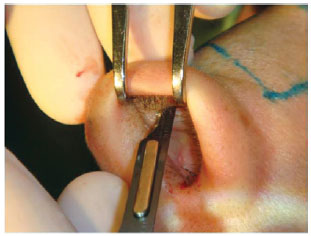
Figure 1 - Transcartilaginous incision.
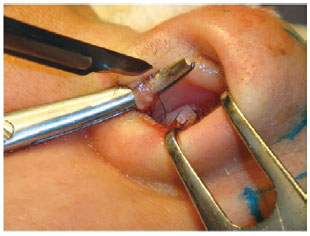
Figure 2 - Resection of the depressor septi muscle.
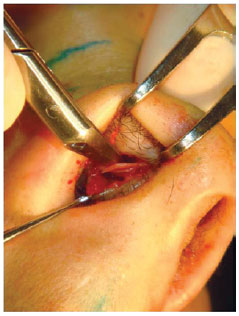
Figure 3 - Detachment of the cephalic portion of the lower lateral cartilage.
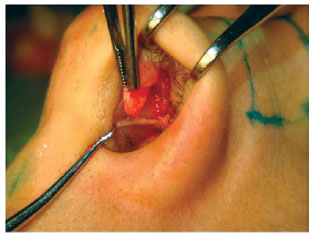
Figure 4 - Resection of the cephalic portion of the lower lateral cartilage.
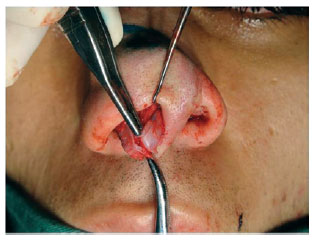
Figure 5 - Technique of delivery (exposed lower lateral cartilages).
RESULTS
A total of 60 (50.42%) patients, 53 women and 7 men, who had undergone rhinoplasty were included in the study. Although it was not the original intention, the study included only closed rhinoplasties performed with or without a delivery approach.
With regard to the general satisfaction of the patients with the aesthetic and functional results of the rhinoplasty, 85.48% reported that they were satisfied, demonstrating a high index of patient satisfaction with the final result.
When questioned about the degree of satisfaction with the postoperative appearance of the nose, 53 (88.3%) patients were very or completely satisfied and 5 (8.33%) were moderately satisfied (Figure 6).
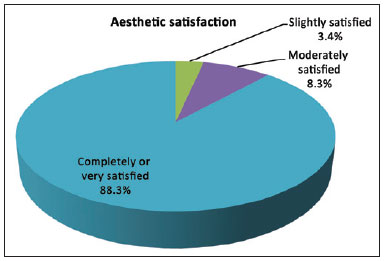
Figure 6 - Graph demonstrating patient satisfaction with the postoperative aesthetic results.
When asked about postoperative nasal function, 50 (83.3%) patients said that they were very satisfied or were able to breathe normally through the nose and 7 (11.6%) reported moderate nasal breathing (Figure 7).
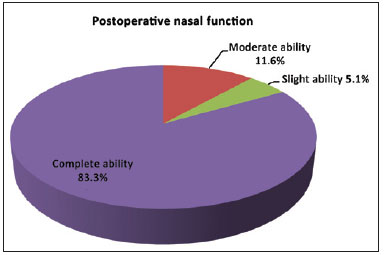
Figure 7 - Graph demonstrating patient satisfaction with postoperative nasal function.
When questioned about the impression of friends and family with regard to the final appearance of the nose, 56 (93.3%) patients said that they were very or completely satisfied with the result and 3 (5%), were moderately satisfied (Figure 8).

Figure 8 - Graph illustrating the satisfaction of families and friends of patients with the final surgical result.
When asked if the nasal appearance limited social or professional activities, 56 (93.3%) patients answered rarely or never and 3 (5%), sometimes (Figure 9).
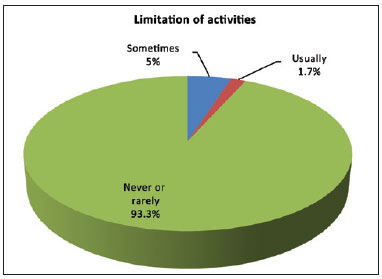
Figure 9 - Graph illustrating the limitation of social and professional activities of post-rhinoplasty patients.
When asked whether they believed that the appearance of the nose was the best possible, 45 (75%) replied that they were very or completely confident and 8 (15%), moderately confident (Figure 10).
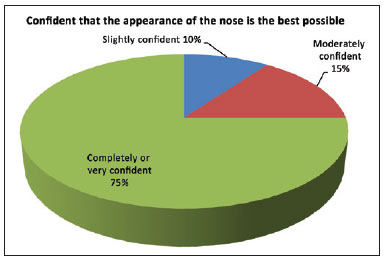
Figure 10 - Graph showing the patients' confidence that the postoperative appearance was the best possible.
In response to questions about the desire to change the appearance of the nose with additional surgery, 46 (76.7%) patients replied "definitely not", 8 (13.3%) said "probably not," and 6 (10%) said "maybe" (Figure 11).
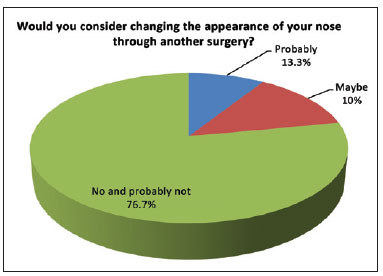
Figure 11 - Graph showing the desire of patients to undergo a new surgical procedure to change nasal appearance.
When the patients were asked whether they would like to change nasal function with additional surgery, 50 (83.4%) patients (Figure 12) replied "definitely not," 8 (13.3%) answered "probably not," and 2 (3.3%) said "maybe."
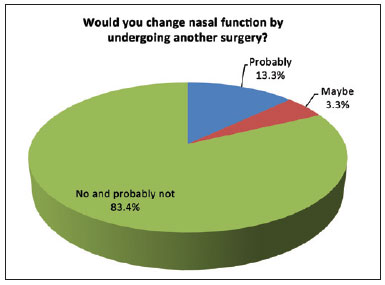
Figure 12 - Graph illustrating the desire of patients to undergo to a new surgical procedure to change nasal function.
All surgeries were primary rhinoplasties carried out by 3rd year Plastic Surgery residents supervised by a preceptor. The average follow-up period before the administration of the questionnaire was 32 months.
DISCUSSION
The results of this retrospective study demonstrated that patients who underwent rhinoplasty at the Plastic Surgery Department of Santa Casa de Misericórdia de Porto Alegre showed a high level of satisfaction (85.48%) with the procedure.
Although the present study did not intend to limit the population assessed, the patients that were included in the survey had all been treated by a closed rhinoplasty. Therefore, our data reflect the satisfaction of patients that exclusively underwent closed rhinoplasty, with or without an associated delivery procedure. However, the data obtained in this study clearly demonstrate a high index of satisfaction with the aesthetic results of rhinoplasty as well as with postoperative respiratory function.
Similar to the studies by Constantian5 and Souza Pinto et al.6, we demonstrated that closed rhinoplasty may offer good aesthetic and functional results in the long term, provided that the preoperative diagnosis is accurate and the surgical steps are implemented in a precise and efficient manner.
It was also evident that family members and friends, in consonance with the patients, were satisfied with the result of the procedure. Most patients believed that the best possible result was achieved, and the change in nasal appearance did not result in social or professional limitations; further, they would not undergo a new surgical procedure to change aesthetic or nasal function.
It is important to highlight that this was a subjective study, and data were obtained through a questionnaire administered to patients in the late postoperative period. The study aimed to assess the performance of surgeons with regard to the results obtained in the postoperative follow-up period, and despite the limitations of the design, the objectives of the study were reached.
CONCLUSIONS
In the present study, Alsarraf's questionnaire was applied to demonstrate that rhinoplasty performed at the Plastic Service Department of Santa Casa de Misericórdia de Porto Alegre results in a high index of patient satisfaction.
REFERENCES
1. Faidiga GB, Carenzi LR, Yassuda CC, Silveira F, Lago T, Leite MG, et al. Long-term evaluation in aesthetic rhinoplasty in an academic referral center. Braz J Otorhinolaryngol. 2010;76(4):437-41.
2. Freiberg A, Giguère D, Ross DC, Taylor JR, Bell T, Kerluke LD. Are patients satisfied with results from residents performing aesthetic surgery? Plast Reconstr Surg. 1997;100(7):1824-33.
3. Alsarraf R. Outcomes research in facial plastic surgery: a review and new directions. Aesthetic Plast Surg. 2000;24(3):192-7.
4. Meningaud JP, Lantieri L, Bertrand JC. Rhinoplasty: an outcome research. Plast Reconstr Surg. 2008;121(1):251-7.
5. Constantian MB. Rhinoplasty: craft and magic. Saint Louis: Quality Medical; 2009.
6. Souza Pinto EB, Maloof RG, Dutra RT, Carvalho AS, Morelli LHU, Zanetta FP, et al. Rinoplastia endonasal: um estudo do grau de satisfação dos pacientes em cinco anos. Rev Bras Cir Plast. 2010;25(4):637-40.
1. Specialist physician, resident of Plastic Surgery at Santa Casa de Misericórdia de Porto Alegre, Porto Alegre, RS, Brazil.
2. Doctoral candidate at Universidade Federal de Pelotas, Pelotas, RS, Brazil.
3. Doctoral candidate at Universidade Federal de Ciências da Saúde de Porto Alegre, Porto Alegre, RS, Brazil.
4. Plastic surgeon, full member of the Brazilian Society of Plastic Surgery (SBCP), preceptor of the Plastic Surgery Department of Santa Casa de Misericórdia de Porto Alegre, Porto Alegre, RS, Brazil.
5. Doctorate in Plastic Surgery, full member of SBCP, head of the Plastic Surgery Department of Santa Casa de Misericórdia de Porto Alegre, president of SBCP - Rio Grande do Sul Section, Porto Alegre, RS, Brazil.
Correspondence to:
Gustavo de Azambuja Pereira Filho
Av. Prof. Oscar Pereira, 3.008 - Glória
Porto Alegre, RS, Brazil - CEP 91710-000
E-mail: gustavopereirafilho@gmail.com
Submitted to SGP (Sistema de Gestão de Publicações/Manager Publications System) of RBCP (Revista Brasileira de Cirurgia Plástica/Brazilian Journal of Plastic Surgery).
Paper received: August 29, 2011
Paper accepted: October 31, 2011
Study conducted at the Plastic Surgery Department of Santa Casa de Misericórdia de Porto Alegre, Porto Alegre, RS, Brazil.


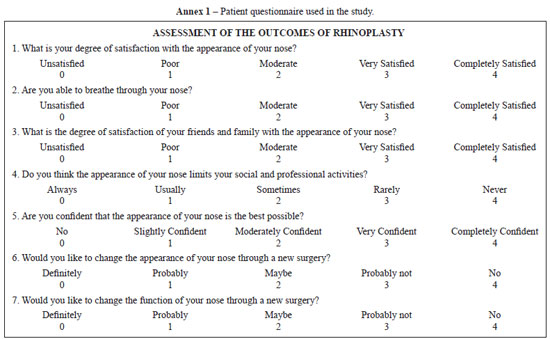
 Read in Portuguese
Read in Portuguese
 Read in English
Read in English
 PDF PT
PDF PT
 Print
Print
 Send this article by email
Send this article by email
 How to Cite
How to Cite
 Mendeley
Mendeley
 Pocket
Pocket
 Twitter
Twitter